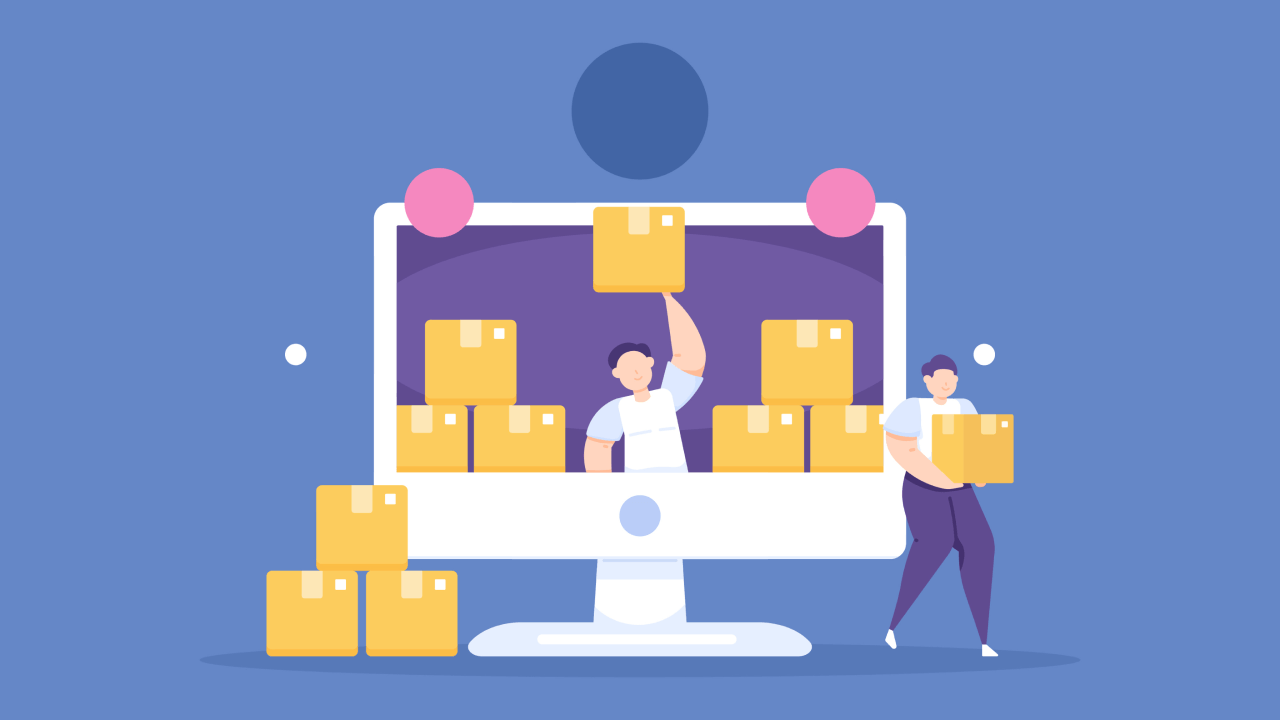Success in dropshipping starts with a clear Dropshipping Marketing Strategy that ties niche selection, product research, supplier choice, ad creative, and conversion optimization into a single plan. You know the drill: low conversion rates, ad spend that vanishes, slow shipping and unhappy customers. What do you change first? This article lays out practical steps on product selection, pricing and profit margins, order fulfillment, ad testing, SEO, retargeting, landing page design, analytics, and customer service to help you learn best strategies & tips on how to succeed in dropshipping. PagePilot's AI page builder turns those strategies into ready-to-test pages and templates so you can launch offers, test ad creatives, and improve conversion faster with less guesswork.
Summary
- Dropshipping rewards rapid test-and-iterate strategies, given the market scale with forecasts expecting the global dropshipping market to reach $557.9 billion by 2025.
- Adoption and competition are significant: about 22% of online retailers use dropshipping as their primary model, and the approach accounts for 33% of online retail sales, meaning cheap angles get copied quickly.
- Disciplined experiments outperform shotgun scaling, so run short-paid tests in a 7 to 14-day window and follow a phased budget approach: micro-tests of $50 to $200, validation at $500 to $2,000, and only consider larger pre-inventory spend after stable metrics.
- Supplier reliability is the common operational failure point, so qualify partners with staged volume checks, such as 10, then 100, then 1,000 orders, and pause scaling if defect rates rise above your threshold.
- Operational controls matter because customer service is a core risk, with 60% of dropshippers citing CS issues as their biggest challenge, and margins vary widely so aim for a conservative contribution margin like 25% within the typical 15% to 45% range.
- This is where PagePilot's AI page builder fits in; it addresses testing velocity by generating ready-to-test pages and ad-ready creative from competitor or supplier URLs in minutes so teams can run the 7 to 14-day experiments the article recommends.
What Exactly is Dropshipping?

Dropshipping is a retail fulfillment method where you sell products online without holding inventory, and the supplier ships orders directly to your customers. It removes upfront stock costs and lets you focus on finding demand, creativity, and conversion, but it also hands key parts of the customer experience to someone else.
What Does The Day-To-Day Actually Look Like?
Think of running a pop-up that never buys stock: you build a storefront, list products, drive traffic, and when an order lands, you pass the details to a supplier who fulfills and ships. Your work becomes product selection, creative testing, pricing, and customer support; the supplier handles picking, packing, and delivery. That separation scales fast when it works, and fails fast when it does not.
Why Do Entrepreneurs Choose Dropshipping?
Most merchants pick dropshipping because it lowers the money and time needed to begin testing products, and it forces a focus on demand before inventory. According to Dropship It, “The global dropshipping market is expected to reach $557.9 billion by 2025.” The market scale rewards rapid test-and-iterate strategies. If you aim to validate products quickly and pivot based on real purchase signals, this model is tailored for that pace.
What Common Mistakes Eat Time and Margin?
When we coached early-stage sellers during six-week launch sprints, the pattern became clear: they paid for expensive courses or chased a single “winning” listing, then poured ad spend into a product before proof of consistent conversion. That approach feels like progress, but it burns budget and confidence.
Another frequent error is treating dropshipping as a complete business plan rather than a fulfillment method, leading teams to underinvest in branding, customer service, and supplier vetting until it’s too late.
The Efficiency of AI-Driven Page and Creative Generation
Most teams handle page and creative work by outsourcing to designers and copywriters because it feels controlled and polished. As the catalog grows, that familiar approach fragments messaging and slows testing, turning stealthy opportunities into weeks of waiting for assets.
Platforms like PagePilot provide automated extraction of product data, proven sales-oriented page layouts, and on-demand ad creative generation, so sellers find they can compress page builds from days to minutes and scale tests without recurring designer or copywriter costs.
What Trade-Offs Should You Watch For?
The predictable failure point is supplier reliability and long shipping windows, not marketing skill. That’s the hidden cost of low-capital starts: when returns, delays, or poor product quality hit, your brand takes the damage. Because dropshipping is so widespread, dropshipping is responsible for 23% of all online sales in 2025, and competition moves quickly, and minor service flaws become amplified.
Vet suppliers, buy samples, publish clear shipping policies, and own the resolution process so marketing wins do not evaporate at fulfillment. That explains the mechanics and the tensions, but the deeper question about whether this can become a reliable, long-term business is what really matters next.
Related Reading
- Is Shopify Only for Dropshipping
- Shopify vs WooCommerce Dropshipping
- How to Start Digital Dropshipping
- Dropshipping Mistakes
- Branded Dropshipping
- Ghost Dropshipping
Is Dropshipping a Successful Business Model?

Yes, dropshipping can be a successful business model, but only when you treat it like a disciplined testing engine rather than a shortcut to easy revenue. Success comes from fast, repeatable product validation, tight control over the customer experience, and converting small wins into durable offers that customers trust.
Why Do Some Stores Thrive While Most Stall?
The pattern is simple: stores that win are relentless about conversion math and iteration. They run short test cycles, limit ad spend per hypothesis, and measure return on ad spend and repeat purchase rate as primary metrics. Stores that fail treat early wins as proof of scale rather than as signals to double down on messaging, supplier quality, and post-purchase service.
How Crowded Is This Field Right Now?
Adoption is high, not niche; about 22% of online retailers have adopted dropshipping as their primary business model, AppScenic, which helps explain why straightforward product plays get copied fast. That level of adoption means any cheap angle evaporates quickly, so your edge must come from speed of testing and differentiating creative, not from the product alone.
Does The Model Still Move Significant Volume?
Dropshipping accounts for 33% of online retail sales, which shows the model is not a fringe tactic but a structural piece of modern e-commerce. That volume creates opportunity, and it also concentrates competition on the channels and pages that actually convert.
What Breaks When Teams Scale Testing?
Most teams handle page and creative work by outsourcing to freelancers because it feels controlled and familiar. That works until catalog growth and test velocity demand consistency.
Feedback multiplies, asset handoffs slow down, and the time from idea to live test stretches from days to weeks, killing momentum and inflating customer-acquisition costs. The hidden cost is time, not dollars, because every delayed test is a lost learning opportunity that competitors capture.
How Do You Shift From Lucky One-Offs To A Repeatable Business?
- Treat product discovery like a lab, and make hypotheses cheap to validate.
- Run constrained experiments: fixed budget, fixed traffic source, and a single changed variable per test.
- When a product hits repeatable conversion thresholds within your test window, capture it with improved visuals, bundled offers, and a retention touch that earns a second purchase.
That sequence turns early profit into a defendable listing.
Boosting Test Velocity: Shifting from Freelancers to AI for Page Builds
Most teams manage creative and page builds with freelancers because it is familiar and low-risk, but as testing volume grows, the process fragments and slows decision-making. That friction costs you test rate and consistency. Platforms like AI page builder centralize page generation by extracting product data, producing conversion-focused layouts, and creating ad-ready assets, compressing page builds from days to minutes while keeping message and visual quality consistent.
It is exhausting when ad costs, slow supplier responses, and returns eat into margins and morale; You have seen founders pivot from chasing viral hits to running 7- to 14-day test loops that preserved runway and revealed sustainable winners. That emotional cycle matters because steady, measurable progress beats sporadic windfalls every time.
AI Tools for Rapid E-commerce Page Creation and Testing
Our AI Page Builder will help you test products and angles way faster than before; just give the AI a competitor or supplier URL, and it will create a high-converting product page using the information found on that site. Using the AI Product Image function, you can upgrade product visuals so you are not competing with identical copy and images as every other store. You can also start a FREE Trial and generate 3 product pages for free today (no credit card needed).That small change in pace is everything, and what happens next will force you to rethink how you prioritize tests and scale winners.
Related Reading
- How to Make Tiktok Ads for Dropshipping
- SEO for Dropshipping
- Organic Dropshipping
- Facebook Ads for Dropshipping
- Dropshipping Keyword Research
- Google Ads for Dropshipping
- How to Start Dropshipping Business
How to Succeed in Dropshipping: 17 Best Strategies to Adopt

You succeed in dropshipping by turning random experiments into a disciplined testing engine, then locking winning tests into predictable unit economics and repeatable processes. Move faster than competitors on validated ideas, protect margin on every order, and treat supplier reliability as a core metric, not an afterthought.
What Should Decide Which Product To Test First?
- Score opportunities by three quick signals: early demand (search and ad interest), supplier viability (sample quality and shipping windows), and margin headroom after ad spend.
- Give each product a simple rubric, for example, a 0–10 score, where you require at least a 7 to run a paid test. That forces you to stop treating intuition as a plan and to start controlling risk at scale.
How Do You Know A Test Is Worth Scaling?
- Use a short, strict window: a 7 to 14-day paid test with fixed spend, fixed audience, and one variable changed track add-to-cart rate, checkout conversion, and CAC payback days.
- Prefer a three-line rule: scale only when conversion and AOV produce a projected contribution margin above your margin floor and CAC payback under 60 days.
Why Focus On Unit Economics, Not Vanity Metrics?
The field is competitive; with a meaningful share of merchants using dropshipping, you cannot rely on accidental wins. According to Shopify Blog, 27% of online retailers have adopted dropshipping as their primary fulfillment model, published in 2026, that level of adoption means niches get copied fast and speed plus disciplined economics win. Use projected net margin per order, not clicks, to choose winners.
What Margin Should You Target Before Committing?
Dropshipping margin varies widely, so pick a margin band that sustains ads and operations. The data shows that, from 2026, Shopify Blog reports that dropshipping businesses can achieve profit margins of 15% to 45%.
This suggests two things:
- Some products can support healthy reinvestment, and many cannot.
- Set a conservative floor, for example, targeting products that can deliver at least a 25% contribution margin after ad spend and returns.
How Do You Prevent Supplier Failures From Wrecking Momentum?
Treat suppliers like customers you must qualify. Create a five-item scorecard: sample pass, consistent packaging, average ship time under your threshold, transparent return policy, and a clear escalation path. Run a staged volume test, for instance 10 orders, then 100, then 1,000, and measure defect rate at each step. If the defect rate rises above your tolerance at stage two, stop scaling and switch suppliers before brand damage accumulates.
What’s The Fastest Way To Improve Conversion Without Spending More On Traffic?
- Fix friction on the page that directly blocks purchase: single-click shipping cost visibility, urgent but honest scarcity, one-line social proof near the buy button, and a one-step checkout with saved payment options.
- Then sequence creative: an attention creative to get clicks, a consideration creative that answers the three buyer doubts, and a proof creative that closes the sale.
That sequence shortens the learning loop and gives you cleaner signals about what actually moves conversion.
Transitioning from Outsourcing to Automations
Most teams handle page and creative work by outsourcing to freelancers because it feels familiar and low risk. That works at first, but as test volume increases, handoffs fragment messaging, asset delivery slows to days, and feedback loops stretch into weeks, costing testing velocity and consistency.
Platforms like PagePilot help by automatically extracting product data, generating conversion-focused page layouts, and creating ad-ready creative variants, compressing page and creative builds from days to minutes so teams keep momentum without losing quality.
How Do You Design Creative Experiments That Actually Reveal What to Scale?
Stop running single-creative tests. Create three hypothesis-driven variants per product: problem-first, demo-first, and social-proof-first. Push each variant to a controlled audience slice and measure the micro-conversions that predict purchase, not just the final sale. When one variant consistently wins on add-to-cart and checkout conversion, roll it into your whole funnel and iterate only on copy and thumbnail.
When is it Time to Stock Inventory?
Inventory makes sense after you prove a product converts predictably and margins are stable. Use triggers, for example, sustained conversion above your scaling threshold for 30 days, repeat purchase probability above baseline, and a CAC payback under your acceptable window. Holding inventory too early turns a validation win into operational exposure; waiting too long leaves margin on the table. Treat the move as a math problem with guardrails, not an emotional leap.
How Do You Protect Your Team From Burnout and Churn?
This challenge appears across early-stage sellers and mid-size stores. Teams spread their effort across too many product ideas and suppliers, leading to exhaustion and inconsistent follow-through.
Constrain work into repeating rhythms, for example, two-week test sprints and a monthly review that kills or scales products. That pattern stabilizes attention, preserves runway, and turns sporadic wins into a predictable pipeline.
How Can Automation Keep You Honest at Scale?
Automate what breaks when volume grows: order routing, low-stock alerts, automated refunds for clear cases, and analytics alerts that pause ads when defect rate spikes. Also, wire automated post-purchase flows that aim for a second purchase within 30 days, because retention improves unit economics faster than one-off discounting. These automations free you to think strategically while the system enforces basic reliability.A quick analogy:
Think of dropshipping like a racing team, not a flea market stall; the car needs the right fuel, the pit stops must be precise, and every lap teaches how to tune the next one. That simple advantage buys speed, until you see the one mistake that quietly undoes it.
7 Common Dropshipping Mistakes to Avoid

Treat these mistakes as failure modes you can prevent with clear rules, not as inevitable costs of the model. Build supplier redundancy, set realistic test budgets and timelines, lock down customer-service SLAs, convert reviews into product improvements, and make returns and unit economics measurable controls so early wins become repeatable revenue.
1. How Do You Stop One Supplier From Wrecking A Launch?
Most teams operate with a single preferred supplier because it feels simple. That works until demand spikes or a factory runs out, at which point orders stall and refunds pile up. Create a supplier matrix that scores each partner on sample quality, average ship time, packaging consistency, return handling, and an escalation contact.
Run staged volume tests, for example, 10 orders, then 100, then 500, and monitor a supplier defect rate; if defects climb above your tolerated threshold, switch routing before you scale ads. Treat supplier agreements like service contracts: map expected lead times, penalties for slips, and emergency fulfilment terms. Think of it like keeping multiple runways at a small airport, so flights keep moving when one goes offline.
2. What’s A Realistic Testing Cadence And Budget That Prevents Wasted Ad Spend?
Stop treating early conversion as a license to scale. Use a three-phase budget: micro-test (3–5 days, $50–200), validation scale (7–14 days, $500–2,000), and pre-inventory ramp (only after stable metrics, $5,000+).
Force a checkpoint between phases where you verify supply resilience, return rate, and customer feedback. If any metric fails, pause scaling and fix the root cause. This disciplined cadence preserves runway and turns lucky clicks into predictable unit economics.
3. How Do You Put Customer Support Ahead Of Surprises?
Customer-service failures are the single most significant operational risk in many stores, and that matters because Webuild24 reports that “60% of dropshippers report that customer service issues are their biggest challenge.” Set response-time SLAs, triage tiers, and automated first responses so no inquiry sits for more than 12 hours without acknowledgement.
Build quick-resolution templates for refunds, late-shipment apologies, and product-mismatch cases, then wire auto-refunds for clear-cut issues to stop escalation. Measure CS by resolution time, refund rate, and repeat-customer lift; if resolution time slips, your acquisition work will erode your reputation.
4. When Should You Actually Collect And Act On Reviews?
Don’t treat reviews as vanity. Tag every review into themes: product defect, expectation gap, shipping problem, or praise; then commit to a weekly triage that turns items into concrete fixes. For example, if three customers across different SKUs complain about a flimsy hinge, either demand better materials from the supplier or change the product claim and imagery. Use reviews to tighten your page copy and creative, not just to publish stars; a correction in expectation phrasing often raises checkout conversion more than a discount does.
5. How Do You Write A Return Policy That Protects Margin And Trust?
Translate policy into a flow that your staff and customers both understand. Define non-returnable items, set a clear window measured from shipment date, require photo evidence for claims, and automate label issuance when cases meet your criteria. Model the cost impact of returns into your unit economics, and set a return-rate alarm that pauses scaling if you exceed forecast by X percent. Operationalize returns so they are handled predictably, not debated case by case.
6. What Practical Steps Stop Margin From Evaporating?
Low profit is usually a pricing and positioning problem, not an inevitability. Raise perceived value through bundles, fast post-purchase experiences, and small guarantees that reduce buyer hesitation.
Price with a contribution-margin floor per order, and run a daily competitor price sweep for the few SKUs you scale so you can adjust without racing to the bottom. Treat repeat-purchase probability as a margin lever, and invest in a cheap post-purchase flow that targets second orders within 30 days; improving repeat rate by a few points multiplies lifetime value far more reliably than constant discounting.
7. How Do You Keep The Numbers Honest When Things Scale?
Open a business-only account and reconcile weekly. Track three core KPIs every week: contribution margin per order, CAC payback days, and supplier defect rate. Automate alerts that pause ads when any KPI breaches its guardrail. If you cannot pull those numbers in under 15 minutes each Monday, simplify your stack until you can. Clarity beats complexity when runway is short.
Transitioning from Freelance Handoff to AI-Driven Creative Velocity
Most teams build pages and creatives with freelancers because that feels familiar and controlled. That approach scales into a handoff problem: inconsistent messaging, slow edits, and lost test velocity.
Platforms like AI page builders offer another path; they extract product data, create conversion-focused layouts, and produce ad-ready creative, so teams can keep test velocity without fragmenting the message and reducing the meeting and handoff overhead that kills momentum.
The Importance of Operational Detail
A small analogy to close the operational thread: think of your operation like a race pit. If the pit crew is untrained, a fast car laps in circles; if procedures are tight, every stop trims seconds and supports aggressive strategy. What you fix in the pit determines whether speed turns into wins or crashes. The frustrating part?
Speed helps, but a quiet operational detail decides whether your rapid tests become a reliable business.
Related Reading
- How to Automate Shopify Dropshipping
- How to Drive Traffic to Shopify Store
- Google Trends Dropshipping
- How to Make Ads for Dropshipping
- Best Dropshipping Video Ads
- What Should I Name My Dropshipping Store
- Branding Dropshipping
Start a FREE Trial and Generate 3 Product Pages with Our AI Page Builder Today
If you want faster, clearer tests that turn early wins into repeatable revenue, consider PagePilot. Generate 3 product pages in under 5 minutes with our AI Page Builder.
Samcart Blog, and Users have reported a 30% increase in conversion rates after using our AI page builder. Run a couple of experiments and let the results decide whether it tightens your funnel and frees your team to scale.






